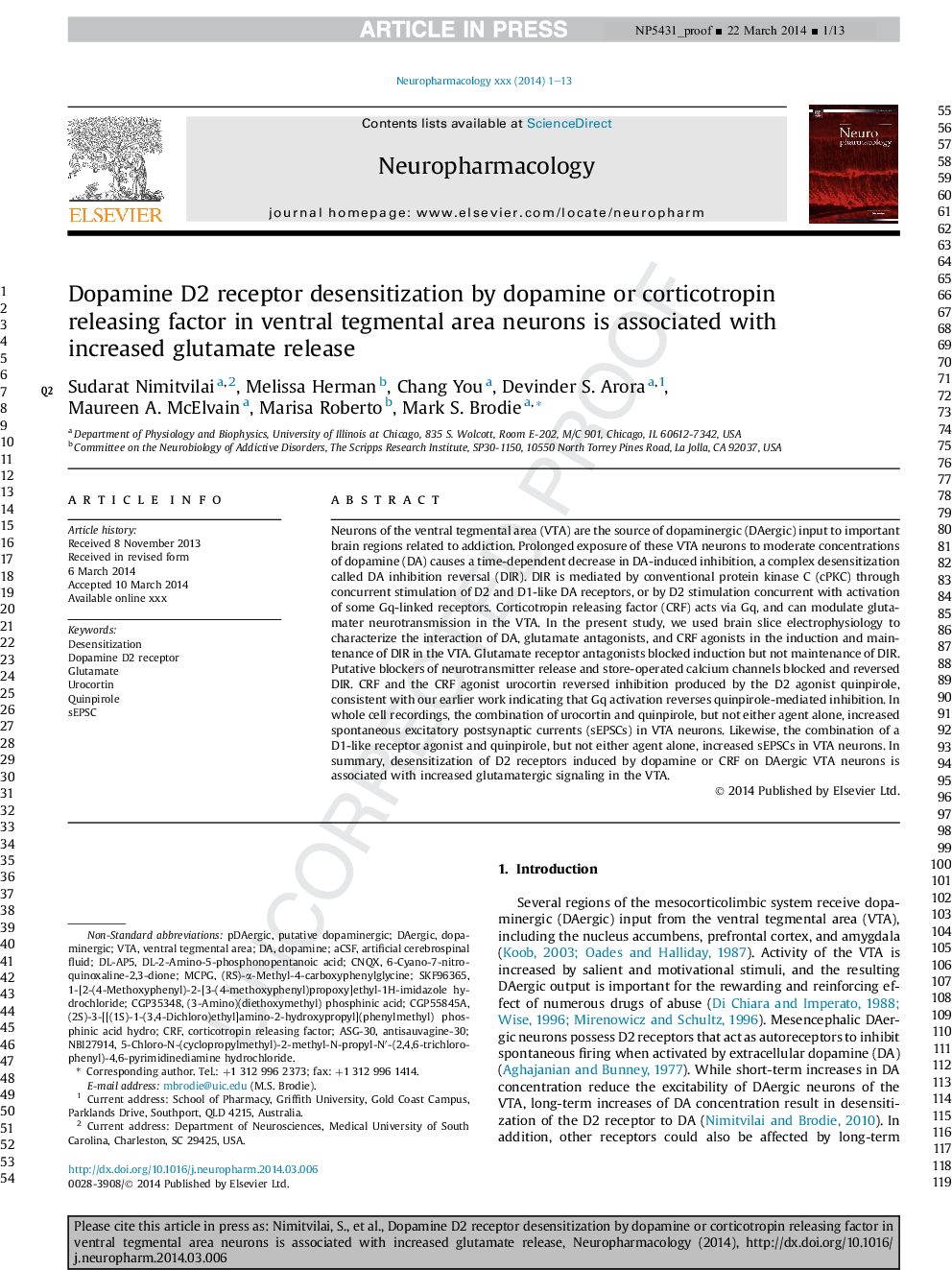| Article ID | Journal | Published Year | Pages | File Type |
|---|---|---|---|---|
| 5814522 | Neuropharmacology | 2014 | 13 Pages |
Abstract
Neurons of the ventral tegmental area (VTA) are the source of dopaminergic (DAergic) input to important brain regions related to addiction. Prolonged exposure of these VTA neurons to moderate concentrations of dopamine (DA) causes a time-dependent decrease in DA-induced inhibition, a complex desensitization called DA inhibition reversal (DIR). DIR is mediated by conventional protein kinase C (cPKC) through concurrent stimulation of D2 and D1-like DA receptors, or by D2 stimulation concurrent with activation of some Gq-linked receptors. Corticotropin releasing factor (CRF) acts via Gq, and can modulate glutamater neurotransmission in the VTA. In the present study, we used brain slice electrophysiology to characterize the interaction of DA, glutamate antagonists, and CRF agonists in the induction and maintenance of DIR in the VTA. Glutamate receptor antagonists blocked induction but not maintenance of DIR. Putative blockers of neurotransmitter release and store-operated calcium channels blocked and reversed DIR. CRF and the CRF agonist urocortin reversed inhibition produced by the D2 agonist quinpirole, consistent with our earlier work indicating that Gq activation reverses quinpirole-mediated inhibition. In whole cell recordings, the combination of urocortin and quinpirole, but not either agent alone, increased spontaneous excitatory postsynaptic currents (sEPSCs) in VTA neurons. Likewise, the combination of a D1-like receptor agonist and quinpirole, but not either agent alone, increased sEPSCs in VTA neurons. In summary, desensitization of D2 receptors induced by dopamine or CRF on DAergic VTA neurons is associated with increased glutamatergic signaling in the VTA.
Keywords
CRFdl-AP5Antisauvagine-30SKF96365MCPGDAergicsEPSCCGP35348VTAaCSF(RS)-α-Methyl-4-carboxyphenylglycine6-Cyano-7-nitroquinoxaline-2,3-dioneDL-2-Amino-5-phosphonopentanoic acidUrocortinDopamineDopaminergicCNQXcorticotropin releasing factorartificial cerebrospinal fluidventral tegmental areaDesensitizationQuinpiroleglutamatedopamine D2 receptor
Related Topics
Life Sciences
Neuroscience
Behavioral Neuroscience
Authors
Sudarat Nimitvilai, Melissa Herman, Chang You, Devinder S. Arora, Maureen A. McElvain, Marisa Roberto, Mark S. Brodie,
